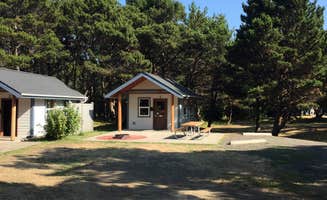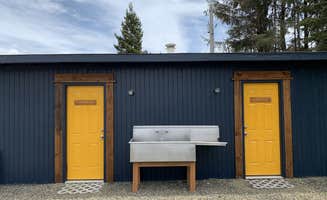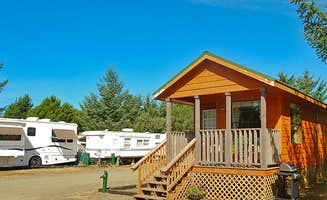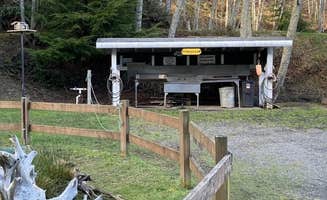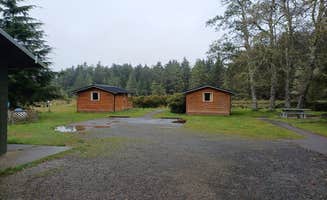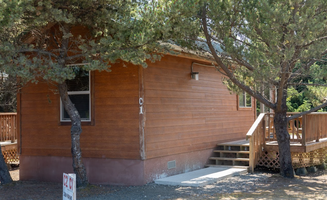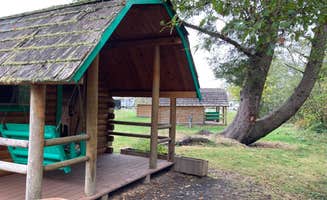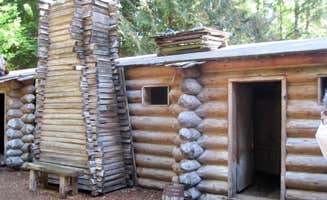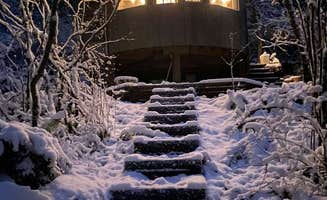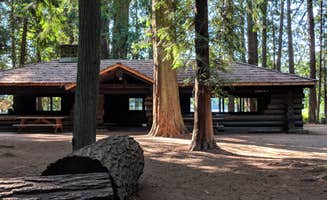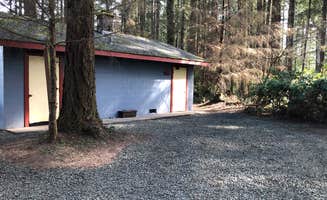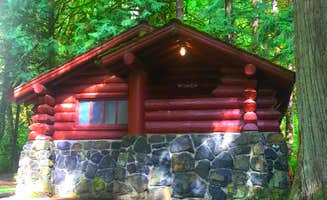Dispersed camping opportunities surround Raymond, Washington, with options ranging from state parks to county-maintained sites within 30 minutes of town. The area sits at the confluence of the Willapa and South Fork Willapa rivers, creating diverse ecosystems that transition from forested inland areas to coastal wetlands. Rainfall averages 83 inches annually, creating lush surroundings with peak camping season running May through September when temperatures range from 55-75°F.
What to do
Beach access exploration: At Grayland Beach State Park Campground, paved walking paths lead through dunes to uncrowded shorelines. According to Dan N., there are "lots of sand dollars" to discover along the beach. Scott M. notes that "the dunes between the campground and the beach make for a nice walk and an awesome place to explore and for kids to play."
Historical site visits: Fort Stevens State Park offers military history alongside camping options. Patrick M. explains it has "interesting history abounds, from old forts, to the dangers (still present) of navigation at the mouth of the Columbia River. Great maritime museum in nearby Astoria." The park operates year-round with nearly 500 campsites.
Clamming expeditions: Bruceport County Park provides direct access to Willapa Bay for shellfish gathering. The park features camping spots along a cliff overlooking the water. Lizzy notes, "Went in late June and the campground was practically empty. Pretty good size tent camping spots. Right next to a cliff looking over the water."
What campers like
Quiet, uncrowded beaches: Cape Disappointment campers appreciate the relative solitude even when the campground fills. Kier S. shares, "One of the things I hate is hearing a ton of people around me while I'm camping. This campground is huge and very popular with families, but because of how close it is to the beach and a pretty constant wind you really don't hear anybody around you."
Privacy between sites: Twin Harbors State Park offers tent sites with more seclusion than the RV section. John G. explains, "Very nice tent portion of the campground, short walk to the beach, beach is very long and uncrowded, although they allow driving on it. RV spots with hookups are lined up next to each other, very little space between."
Weather adaptability: Regardless of conditions, coastal camping maintains appeal. One Willapa Bay KOA camper, Jutta P., recalls, "I had a great stay at the KOA! Even though the weather was a little rainy, I was tent camping, I enjoyed this campground. All the little details they put up all around the campground made me smile every time I passed them."
What you should know
Off-peak advantages: Visiting during shoulder seasons offers unique benefits. A winter visitor to Grayland Beach State Park, Joshua W., shares, "Great time even in the winter. Have been coming here my whole since I was a kid. It's one of my favorites and they got hit hard with the heavy rains. No wind but man it was muddy at our site."
Seasonal pricing fluctuations: Some private campgrounds adjust rates throughout the year. At Bay Center-Willapa Bay KOA, Richard B. notes, "Sadly the campground is under new management and prices for campsites have doubled. What went for $40 is now $80."
Connectivity considerations: Cell service varies throughout the coastal region. Michael Y. at Grayland Beach reports, "Area has wide open sky for solar and Starlink connectivity. Poor cell signal at the campground."
Elevated sites: The Road to Snag Lake dispersed camping area offers unique views from higher elevations. Ryan S. explains, "There are several spots off the road around these radio tower stations and it is quite secluded. The spot we chose was the best as it is away from the towers and buildings, plus has a great view overlooking the valley and bay."
Tips for camping with families
Tent site selection: Choose tent-specific areas for better family camping experiences. A Twin Harbors visitor advises, "Tents, though: sites looked better, bigger, more divided. Also they're on the other side of the highway so beach access is easier. We decided that if we do return we'll dry camp in our little trailer at the tent sites and feel better about our trip."
Educational opportunities: Raymond area camping provides learning opportunities beyond just glamping. Fort Stevens State Park has facilities for kids to learn about local history. Jenny M. explains, "So much for kids to do from exploring, riding bikes, fishing and going to the amphitheater for some stories."
Weather preparation: Pacific Northwest coastal conditions change rapidly. Leonard H. at Grayland Beach State Park recommends flexibility: "Walking paths to beach were muddy at this time... but easy to just go out front gate and walk or drive to end of Cranberry road for easy access with parking and rest rooms at end of road."
Tips from RVers
Site selection strategy: The Lamp Camp offers spacious RV accommodations with proximity to beaches. Tony S. shares, "The spaces are very large and you do not feel cramped at all. It's a far cry from the standard boring, dry, corporate KOA type RV parks and feels very homey."
Hookup considerations: Grayland Beach State Park offers various hookup options but requires planning. Laurie W. recommends, "#89 W/50amp/no sewer. Large, paved, level, private campsites. Walk through the dunes to the beach to put your feet in the ocean."
Waterfront alternatives: When seeking glamping in Raymond, Washington, consider Bayshore RV Park as an alternative to more crowded locations. James notes it's a "laid back and friendly place for RVers. Bay is a mud flat here so no waves. I liked my premium spot with a water view."


